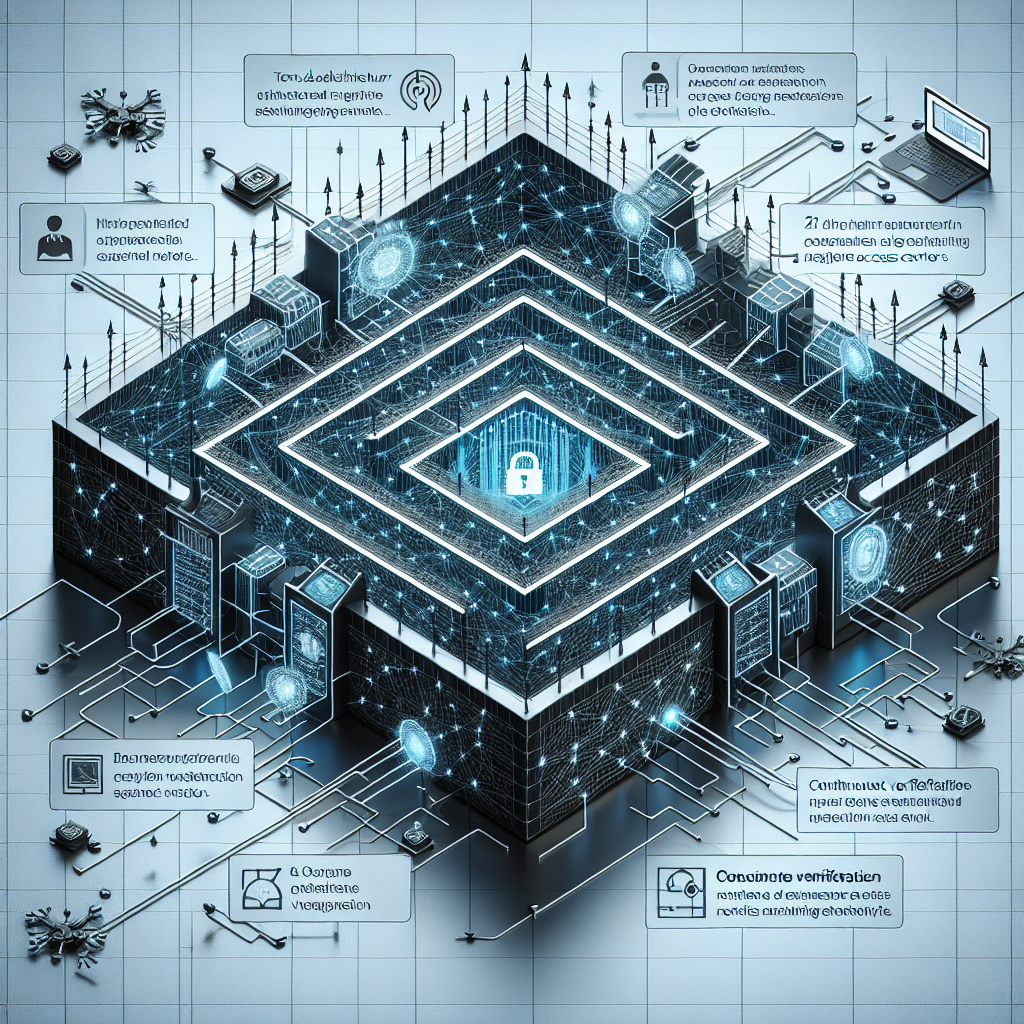In today's rapidly evolving digital landscape, traditional cybersecurity measures are increasingly being outpaced by the sophistication of modern cyber threats. One trend that has gained substantial traction over the past few days is the widespread adoption of Zero-Trust Architecture (ZTA). This paradigm shift is reshaping the cybersecurity strategies of organizations aiming to bolster their defenses against emerging vulnerabilities.
Zero-Trust Architecture operates under a fundamental principle: trust no one and verify everyone. Unlike conventional security models that rely heavily on perimeter defenses such as firewalls, Zero-Trust assumes that threats can originate both outside and inside the network. Therefore, it requires continuous verification of every user and device trying to access resources, regardless of their location within the network.
Several high-profile cases have brought Zero-Trust into the spotlight. For instance, the notorious data breach at Equifax underscored the need for more stringent access controls and internal monitoring. Had the ZTA been implemented, lateral movement within their network could have been detected and mitigated more efficiently.
Implementing Zero-Trust involves creating micro-segments within the network, enforcing strict access controls, and maintaining robust authentication protocols. This approach reduces the attack surface and makes it far more challenging for unauthorized entities to access sensitive data or systems.
The adoption of Zero-Trust is not without challenges. It requires a cultural shift within organizations to embrace constant scrutiny and verification of access privileges. Additionally, technical implementation can be complex, necessitating investments in technology and expertise.
Despite these hurdles, the benefits of adopting Zero-Trust Architecture are compelling. Organizations report enhanced visibility, reduced risk of insider threats, and improved compliance with industry regulations. Furthermore, with the rise of remote work, securing access to cloud resources and applications has become paramount, and a Zero-Trust framework is well-suited to address these requirements.
In my years of experience working with renowned firms like Deloitte and EY, I've witnessed the transformative impact of forward-thinking cybersecurity strategies. Organizations that have adopted Zero-Trust are better poised to tackle the multifaceted challenges of cybersecurity in an era where the perimeter is no longer a solid line but a shifting boundary.
For businesses scrambling to safeguard their digital assets, the message is clear: transitioning to a Zero-Trust Architecture could prove instrumental in staying ahead of potential cyber threats while fostering a culture of vigilance and security-mindedness.
Estimated reading time: 1 minute, 57 seconds
The Rise of Zero-Trust Architecture in Modern Cybersecurity Featured
 Explore the trend of Zero-Trust Architecture reshaping modern cybersecurity strategies to defend against sophisticated threats.
Explore the trend of Zero-Trust Architecture reshaping modern cybersecurity strategies to defend against sophisticated threats.
Latest from Security Tech Brief
- Addressing the Rising Threat of Zero-Day Vulnerabilities in the Cybersecurity Landscape
- Amplified Cybersecurity Measures: Shielding Industries from Ransomware Attacks
- The Rising Tide of Insider Threats in Cybersecurity
- Addressing Software Vulnerabilities: The Crucial Strategy for Business Security
- Navigating Supply Chain Cybersecurity Threats in Today's Digital Age
Most Read
-

-
Jan 30 2020
-
Written by Security Tech Brief Staff
-
-

-
Jan 25 2019
-
Written by Security Tech Brief Staff
-
-

-
May 27 2019
-
Written by Security Tech Brief Staff
-
-

-
Jun 01 2019
-
Written by Security Tech Brief Staff
-














